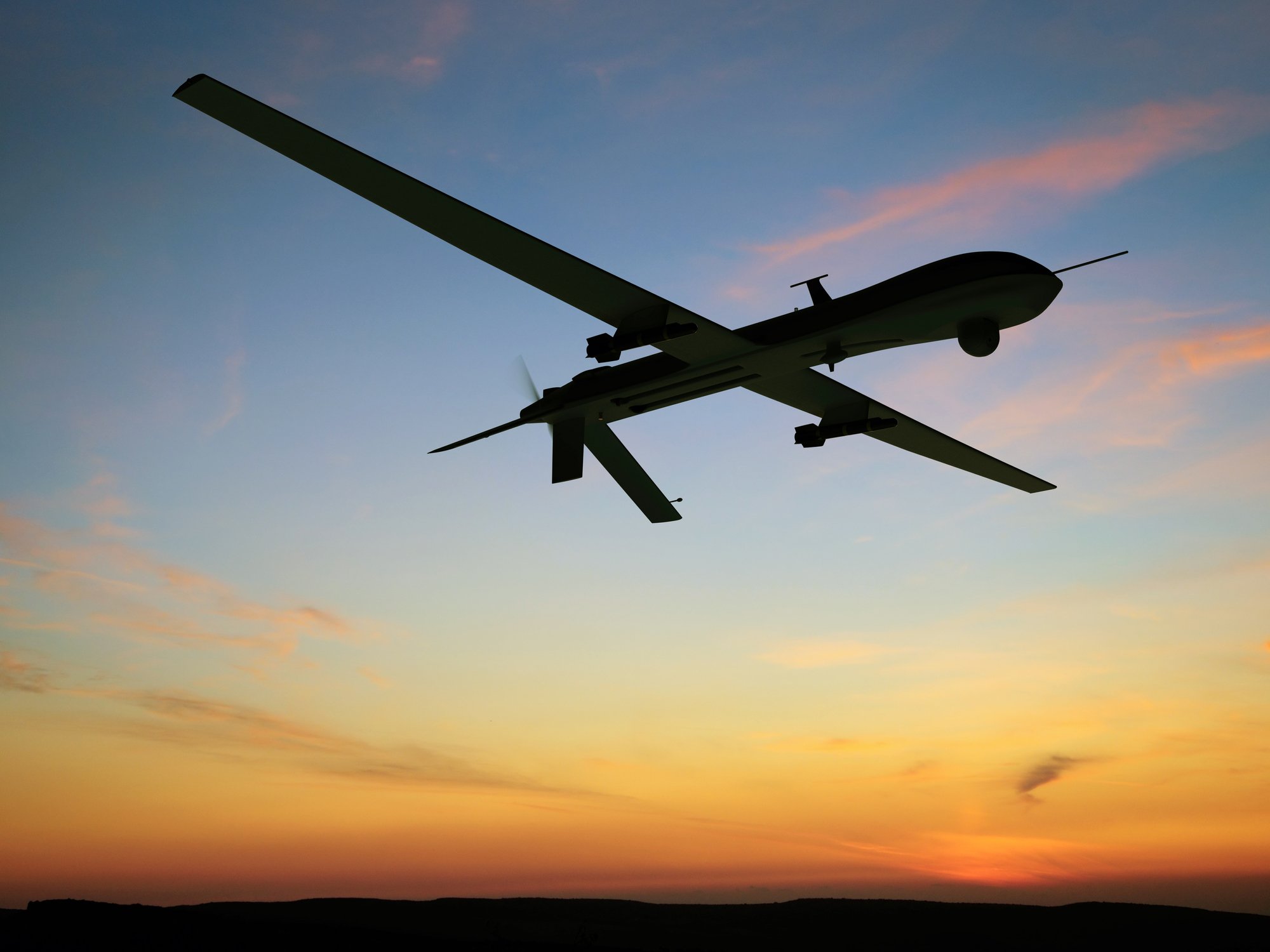
Army Corporal Jerry Rogers assembles a RQ-11 Raven unmanned aerial vehicle, or UAV, in Taji, Iraq. Source: Wikipedia
With earnings for the past two quarters 100% and 79% above analyst expectations, AeroVironment (AVAV +5.37%), developer of unmanned aircraft systems, or UAS, and electric-vehicle-charging systems, emerged in April as an aggressive growth stock. The surpassed expectation of analysts has resulted in a sharp increase in AeroVironment's earning estimates with its P/E reaching dramatic heights above 150. The sensational growth of AeroVironment stock has caught the attention of investors eager to cash in on the exciting world of drone aircraft. Investors in search of a company that will provide a steady and solid return, however, may be disappointed with their purchase of AeroVironment's currently overvalued stock.
The drones go on and on
While small in comparison to titans in the aerospace industry, such as Lockheed Martin (LMT +0.85%) and Northrop Grumman, AeroVironment has positioned itself as a leader in the niche market for UAS and has cashed in on every Department of Defense contract issued for compact UAS devices. Popular products such as the Raven, Wasp AE, Shrike VTOL, and Puma AE have provided the military with easily transportable and deployable devices capable of collecting high-resolution imagery for intelligence, surveillance, reconnaissance, and targeting operations. While not yet operational, AeroVironment also has developed the Nano Hummingbird through a DARPA research contract, a new class of UAV capable of operating indoors and outdoors for use in urban warfare, and its largest UAV to date, the Global Observer, a high-altitude, high-endurance spy plane designed to stay in operation for up to a week.
In 2013, 70% of AeroVironment sales were to the military, government agencies, and government subcontractors. AeroVironment, however, is anxiously awaiting the expansion of UAS from the military theater to the civilian world and has repackaged many of its UAS products for commercial applications. AeroVironment is depending on market expansion to law enforcement, agricultural, and utility companies for company growth. However, diversification of the market has been complicated by the Federal Aviation Administration's reluctance to allow the use of UAVs domestically. The FAA has outlawed the commercial use of UAVs until guidelines are developed to govern their use -- guidelines which may be years in the making.
Droned out
The hype created by AeroVironment's second- and third-quarter fiscal reports will be dampened when the company releases its 2014 10-K for the fiscal year ending April 30, due to come out in June. Since 2009, the company has logged negative growth rates in sales and EPS. The increase in product sales recorded in AeroVironment's 10-Q for the thirrd quarter is not as rosy as it may first appear when considering the company's funded and unfunded backlog from 2013 and 2012.
AeroVironment has projected that 91% of its funded backlog of $152.2 million from the previous two years would be filled in 2014. As of January 2014, however, AeroVironment had only logged $135.7 million in product sales with a 73.4% increase in sales costs revealing a sluggish and expensive production process. The company also carried an unfunded backlog of $172.7 million from the previous two years with no guarantee that it will translate into revenue. In contrast to product sales, income from contract services decreased by more than 50% from 2013 to 2014. When added together, these figures indicate that AeroVironment's growth rates will continue their negative trend in 2014.
Research and development was named as a key aspect of AeroVironment's growth strategy in 2013. However, AeroVironment's R&D expenditures are funded by customer contracts which specify the direction of the company's product line. AeroVironment's R&D expenditures in the thirrd quarter was reduced by almost 50% from the previous year. The reduction may have increased earnings for the short term but it also reveals a shortage in customer contracts, which will ultimately harm the company. The lack of independent R&D funds calls into question AeroVironment's commitment to its growth strategy and its ability to remain competitive in what is quickly becoming a crowded UAS industry.
There is reason to be concerned about AeroVironment's ability to sustain its current stock value. The company has staked its future on UAS; however, the future of UAS is an uncertain one considering the dramatic reduction in Defense Department spending for 2015 and domestic approval of their use caught in government red tape.
AeroVironment is also currently the subject of a Department of Justice investigation due to expenses and billing practices related to its government contracts, which undoubtedly could drive down its stock price as details of the investigation become public.
The drones are here to stay
AeroVironment's future may not live up to investors' expectations and stock prices that have ricocheted between $18.78 and $41.67 over the past 52 weeks may again plummet. However, UAS technology and AeroVironment will be around for the long run.
The size and scale of the commercial use of drones is still up in the air. However, despite complications in the FAA approval process for UAVs, small compact drones, which AeroVironment specializes in, are in line to be the first approved for commercial use. When the commercial market for UAS expands, AeroVironment will be ready with products and customers already developed. Those seeking to move in on investing in the future of drones may want to wait on an inevitable dip in AeroVironment's share price to buy in.







